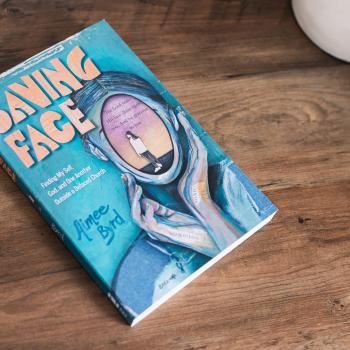I have blogged a great deal on a variety of topics we can loosely call esoteric – on Gnosticism, Theosophy, and alternative scriptures. I have recently been working on how progressive thinkers used those related topics in the first great wave of feminist militancy, between about 1880 and 1912. The resemblances to today are quite convincing. It’s fascinating to see how comprehensively those early feminists mined quite advanced scholarship on the New Testament and early Christianity to make their arguments, and in the process they constructed a whole alternative model of the early church. It amazes me that some of these authors – notably Frances Swiney – are not better known, and more often cited in the church history literature.
In those earlier blogs, I stressed the enormous influence that alternative views of early Christianity had in that period, when so many long lost texts were rediscovered. The Theosophical movement played a critical role in popularizing them, to the point that “lost gospels” were almost as hot a topic for mass media in 1900 or so as they are today.
Theosophical works had a special appeal to feminist thinkers, who found validation for ideas about women’s suppressed role in early Christianity. Many of the leading occult thinkers in this vein were women, including Helena Blavatsky, Annie Besant, and Anna Kingsford. Feminist Bible criticism dates from the 1890s, with the appearance of Elizabeth Cady Stanton’s Woman’s Bible (1895). While it did not seek to revise the scriptural text, the Woman’s Bible offered a thorough-going feminist commentary that pointed out the inconsistencies in Scripture, and stressed the egalitarian nature of Jesus’ teachings.
Other Victorian women, however, took more extreme positions than Stanton, feeling that Christianity was too closely related to patriarchy to be worth saving in anything like its present form. This was the message of Matilda Joslyn Gage’s Woman, Church and State (1893), which argued that ancient society was obviously matriarchal in nature. Gage was also an early adherent of the Theosophical Society, an association that she described as the “crown blessing” of her life. One of her recruits into the movement was her son-in-law L. Frank Baum, author of The Wizard of Oz, among many other titles.
Gage stressed the lost feminine aspects of Christianity, which had been preserved by the Gnostics and other heretics:
The androgynous theory of primal man found many supporters, the separation into two beings having been brought about by sensual desire. …. One of the most revered ancient Scriptures, The Gospel According to the Hebrews, which was in use as late as the second century of the Christian era, taught the equality of the feminine in the Godhead; also that daughters should inherit with sons. Thirty-three fragments of this Gospel have recently been discovered. The fact remains undeniable that at the advent of Christ, a recognition of the feminine element in the divinity had not entirely died out from general belief, the earliest and lost books of the New Testament teaching this doctrine, the whole confirmed by the account of the birth and baptism of Jesus, the Holy Spirit, the feminine creative force, playing the most important part.
It was however but a short period before the church through Canons and Decrees, as well as apostolic and private teaching, denied the femininity of the Divine equally with the divinity of the feminine. There is however abundant proof that even under but partial recognition of the feminine principle as entering in the divinity, woman was officially recognized in the early services of the church, being ordained to the ministry, officiating as deacons, administering the act of baptism, dispensing the sacrament, interpreting doctrines and founding sects which received their names.
With so many documents about Christian origins now readily accessible, the materials were present for a radical feminist revision of early Christian history. Just how thoroughgoing such an endeavor could be was indicated by Frances Swiney’s important book The Esoteric Teachings of the Gnostics (1909), which is virtually forgotten today.
Many of Swiney’s views were eccentric, even for the age, and among other things she believed that sexual desire was just not natural: perhaps it was a by-product of patriarchy? She favored asexual reproduction, and is regarded as a prophet of asexuality. She looked forward to the “gradual extinction of the distinctive male organism, and the assimilation of the male to the female.”
But in her historical accounts of early Christianity, Swiney makes some ground-breaking comments. Though she writes from an occult or Theosophical perspective, Swiney has much in common with modern scholars like Elaine Pagels or Karen King, who attempt to restore the lost voices of the women of early Christianity. For Swiney, the Gnostics found their chief supporters among the emancipated women of the Roman Empire, “early pioneers of the liberation movement of their sex, dialectical daughters questioning the truth and authority of received opinions, earnest intellectual women.” She saw Gnostics as the direct predecessors of the suffragette women of her own day.
Without the benefit of the Nag Hammadi texts, Swiney uses the Pistis Sophia to provide a strikingly full portrait of the Gnostic world-view. She saw the Gnostic faith as a far more spiritual and egalitarian doctrine than the crude beliefs of the orthodox church. Gnostics taught reincarnation; they believed “that the real human is male-female, devoid of differentiated sexuality; the duality of manifestation now existing being a transitory phase of existence”; while the notion of Christ’s vicarious sacrifice for sins was a “monstrous doctrine” invented by the orthodox. “Though Gnosticism long predated Christianity, the Gnostics were the first Christians; they accepted Christ in the full realization of the word; his life, not his death, was the key-note of their doctrine and their practice.”
Gnostic beliefs were expressed in gospels which, Swiney believed, were accepted and regarded as canonical decades before a like veneration was extended to orthodox texts like the letters of Paul. The surviving Gnostic fragments, “the few mutilated relics that remain of these writings, [are] the most valuable evidence of what primitive Christianity really was, and what was the contemporary opinion of Christ and his teaching.”
These noble Gnostic thinkers, “the guardians of the most sacred truths of existence,” were subjected to orthodox persecutions that collectively represent “the bloodiest and the blackest records that history can show us”: these acts were inflicted by “the uninformed, narrow-minded fathers of the primitive church.” Worse than merely obscurantist, the Christian reaction specifically represented male persecution of women: “The Gnostics kept true to the original pristine faith in the Femininity of the Holy Spirit. A truth universally suppressed in the fourth century AD by the male priesthood of the Christian Church.”
Male priests had systematically doctored the surviving texts: “It is very suggestive of a sinister motive that in most of the erasures and where pages are missing in these Gnostic writings, the subject treated is in the context is some hidden mystery, the interpretation of which was unacceptable to the masculine mind and to bigoted orthodoxy.” The iniquitous exclusion of women from the faith and its scriptures was the direct cause of “the persecution, degradation and maltreatment of womanhood” through the succeeding centuries.
In 1916, Theosophy’s historian W. J. Colville quoted both Swiney and Kingsford in his account of “The Esoteric Teachings of the Gnostics – The Divine Feminine” (in his Ancient Mysteries and Modern Revelations). As he remarked, “No more fascinating doctrine than that of Gnosticism can possibly engage our interest, and especially now that the position properly assignable to Woman is one of the burning issues of the times.”
For a few years, in quite modern times, Gnosticism mattered in real world politics.
I also raise one possibility. As transgender issues become more prominent, and as they will assuredly agonize the churches, will Frances Swiney gain a new significance for her central focus on androgyny? Her time may yet come.
Is there really no full biography of Swiney? She is cited occasionally in articles on British feminism, but the most substantial discussion I have found is in: George Robb, “Eugenics, Spirituality, and Sex Differentiation in Edwardian England,” Journal of Women’s History 10 ( 1998): 97-117; and also by George Robb, “Between Science and Spiritualism,” Diogenes 208(2005): 163-168.
To give an idea of the range of Frances Swiney’s work and interests, I borrow this list of her books:
- The Plea of Disfranchised Women (Cheltenham: Shenton, 1896)
- The Awakening of Women, or Woman’s Part in Evolution (London: George Redway, 1899)
- The Cosmic Procession or The Feminine Principle in Evolution (London: Ernest Bell, 1906)
- The Bar of Isis (London: The Open Road Publishing, 1907)
- The Mystery of the Circle and the Cross (London: Open Road Publ., 1908)
- The Esoteric Teaching of the Gnostics (London: Yellon, Williams & Co., 1909)
- Racial Poisons (Cheltenham: League of Isis, 1910-12)
- Racial Problems (Cheltenham: League of Isis, 1910-14)
- Woman and Natural Law (London: C.W. Daniel, 1912)
- Responsibilities of Fatherhood (Cheltenham: League of Isis, 1912)
- ‘Our Indian Sisters’, Racial Pamphlets No. 12 (Cheltenham: League of Isis or the Law of the Mother, 1914)
- The Ancient Road, or, The Development of the Soul (London: Bell and Sons,1918)













